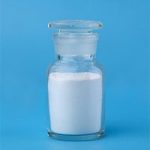Specifications
PVB Resin
A:Binder-grade PVB resin specifications
| Item and Index | WWW-A-10 | WWW-A-20 | WWW-A-30 | WWW-A-40 | WWW-A-50 | WWW-A-60 | WWW-A-70 |
| Appearance | White or Slightly yellow powder,no visible impurity | ||||||
| Volatile,%,≤ | 3 | ||||||
| Viscosity,mPa.S (-1viscometer method) |
≤5 | 5~10 | 10~18 | 18~30 | 30~60 | 60~180 | >180 |
| Hydrogen chloride,%,≤ | 0.05 | ||||||
| polyvingl butyrdsf,% | 68~85 69~85 70~85 | ||||||
| Ash,%,≤ | 0.05 | ||||||
B:Film grade PVB resin
| Item and Index | WW-B-10 | ||||||
| Appearance | White or Slightly yellow powder,no visible impurity | ||||||
| oxhydryl·% | 3 | ||||||
| Volatile·%·≤ | ≤5 | 5~10 | 10~18 | 18~30 | 30~60 | 60~180 | >180 |
| Hydrogen chloride·≤ | 0.05 | ||||||
| ET2H %·≤ | 68~85 69~85 70~85 | ||||||
| Viscosity,mPa.S | ≥98(430nm wavelength spectrophotometer) | ||||||
| Transparency,% | ≥98(660nm wavelength spectrophotometer) | ||||||
| Melt index,g/10min | 0.80-2.20 | ||||||
| Film(transmittance) %,≥ | 89 | ||||||
| Film(Haze),%, ≤ | 0.30(Grade a) 0.40(Grade b) 0.60(Grade c) | ||||||
| Yellow index,%,≤ | 0.50(Grade a) 0.60(Grade b) 0.80(Grade c) | ||||||
| Density,g/cm³,≥ | 0.2 | ||||||
Packing& Storage
| Packing | In 25KG bag or per customer needs. | |||||||
| Storage | In a cool, ventilated and dry place, prevent sun and rain, away from fire. | |||||||
| Shipping | Can be transported as non-dangerous goods. | |||||||
Frequently Asked Questions
What is PVB Resin ?
Polyvinyl butyral (PVB) is a synthetic resin formed by condensation reaction of polyvinyl alcohol and n-butyral with hydrochloric acid as catalyst, abbreviated as PVB.
It not only has a high degree of transparency, good cold resistance, water resistance, film formation and impact resistance, widely used in glass intermediate film, porcelain flower paper, metal protective paint, hydropine paper, aluminum foil paper, edge paint, fiber treatment agent, parts, printing ink, dye and so on.
What is PVB Resin Used for?
Mainly used in transparent materials (reliable glass interlayer), coatings (copper clad plate, ink, paint), adhesives (glass bonding, metal bonding, enameled coil bonding, heat sealing adhesive, transfer trademark adhesive), printing and so on.
How is the PVB Resin Produced?
In the industry, polyvinyl alcohol and butyraldehyde are generally used as raw materials, water is used as the medium, hydrochloric acid is used as the catalyst, and the condensation reaction is gradually heated to 55℃. After the powder particles are precipitated, the catalyst is washed with water, the residual acid is neutralized with alkali, and the product is obtained after drying. In addition, butyl aldehyde is also used to dissolve polyvinyl acetate in organic solvent, in the presence of inorganic acid catalyst, polyvinyl acetate is hydrolyzed, followed by condensation with butyral, PVB is obtained, and then precipitated after adding water. The method of preparing PVB by Shawinigan Kesin Company and Mosanto Chem company in the United States is to polymerize monomer vinyl acetate to obtain polyvinyl acetate, and then heat it in the presence of inorganic acid for hydrolysis and filtration to obtain polyvinyl alcohol, and then acetal reaction with butyric aldehyde, and finally add water to precipitate PVB.

